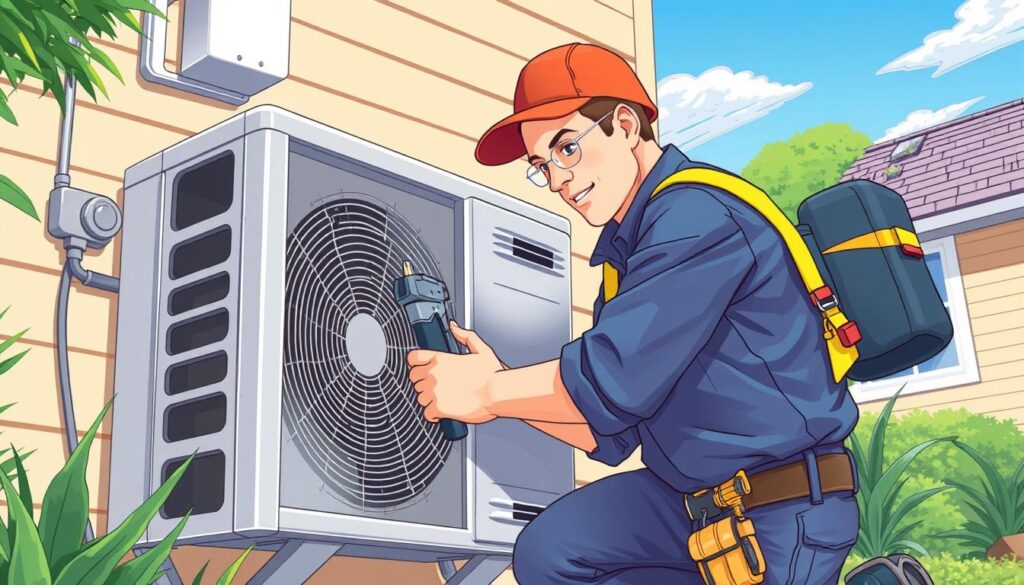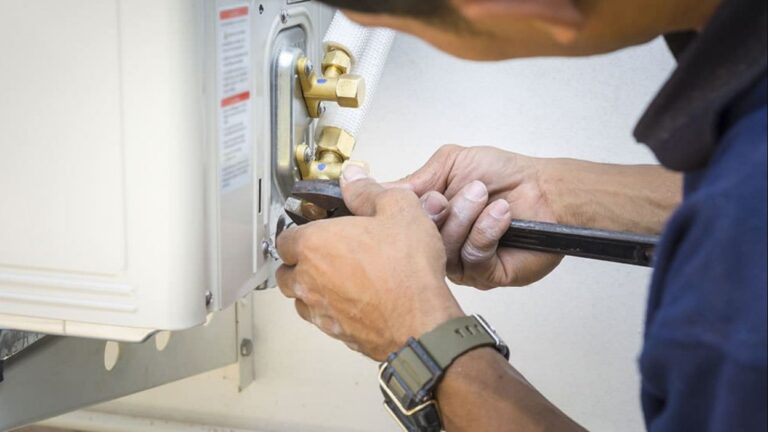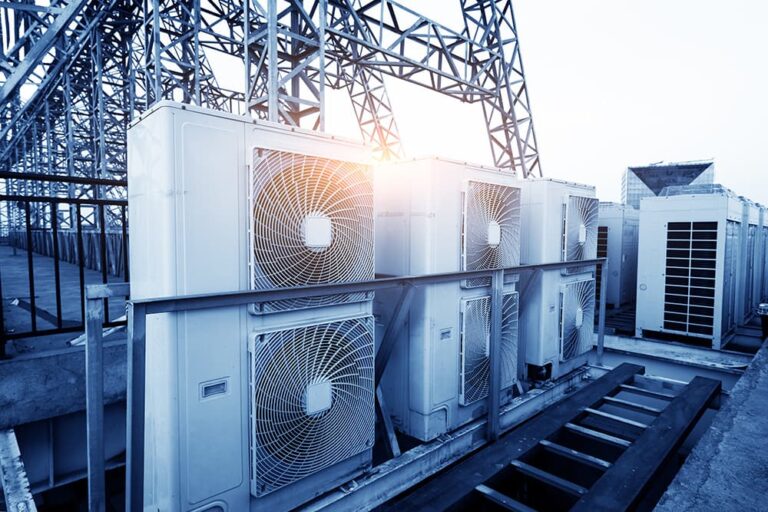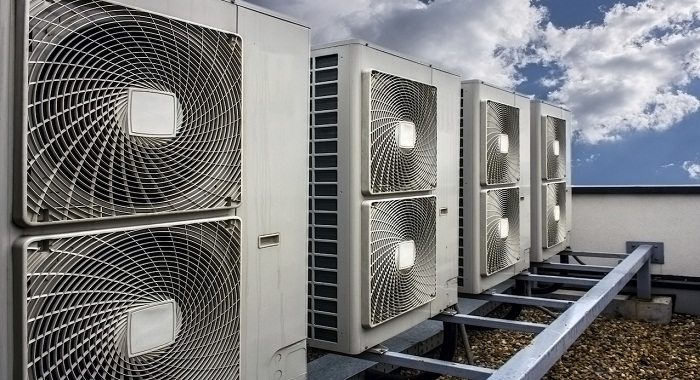AC Drain Pan Overflow? Here’s What It Means and How to Fix It
Discovering that your air conditioning unit isn’t working can be frustrating and sometimes alarming, especially considering the potential costs of repairs.
A full drip pan is a common issue that requires immediate attention to prevent water damage to your home.
When water accumulates in the pan and overflows, it’s a sign of a drainage problem within your air conditioning system.
Understanding the causes and solutions for this issue can help you address the problem quickly and potentially avoid costly repairs.
Key Takeaways
- An overflowing drip pan can cause serious problems, including slip & falls, wood rot, mold & mildew growth, and electrical damage.
- Promptly addressing the issue can save you time and money.
- Regular maintenance can help prevent drain pan problems.
- Knowing when to call a professional HVAC technician is crucial.
- Understanding your air conditioning system’s components can help you identify issues early.
Understanding Your AC Drain Pan System

Your air conditioner’s drain pan system is designed to manage condensation, a byproduct of the cooling process, and prevent it from causing issues in your home. As warm air makes contact with the cooling evaporator coils, droplets of water can form and drip down.
What Is an AC Drain Pan and How Does It Work?
The AC drain pan is a crucial component that collects condensation created during the cooling process. It is directly connected to the condensation drain line, allowing water to be safely drained away from the system and out of your home. For more information on inspecting your AC drain pan and condensate line, you can visit this resource.
Why Proper Drainage Is Critical for Your AC Unit
Proper drainage is essential because standing water in your AC system can lead to mold growth, component corrosion, reduced efficiency, and potential water damage to your home. When the drainage system functions correctly, you’ll never notice it working – water flows seamlessly from the cooling process out of your home without accumulation. To learn how to clear your HVAC drain line, check out this guide.
| Component | Function |
|---|---|
| Primary Drain Pan | Located directly under the evaporator coil, it collects condensation. |
| Secondary (Auxiliary) Drain Pan | Positioned underneath the unit as a backup to prevent water damage. |
| Drain Pipe | Channels water from the drain pan to the outside or a designated drain. |
As
“A well-maintained AC drain pan system is key to preventing water damage and ensuring the longevity of your air conditioning unit.”
Understanding how your drain system works helps you identify when something is wrong and take appropriate action before minor issues become major problems.
Common Causes of AC Drain Pan Overflow
An overflowing AC drain pan can be a real nuisance, but understanding its causes can help you tackle the problem. Several factors can contribute to this issue, ranging from maintenance oversights to installation errors.
Clogged Condensate Drain Line
A clogged condensate drain line is a prevalent cause of AC drain pan overflow. This blockage is often due to the accumulation of algae, mold, dirt, or debris within the pipe, preventing water from draining properly. Regular maintenance can help prevent such clogs.
Frozen Evaporator Coils
Frozen evaporator coils can also lead to an overflowing drain pan. When coils freeze due to restricted airflow or refrigerant issues, the subsequent melting of ice can overwhelm the drain pan’s capacity. Ensuring regular filter changes and maintaining adequate refrigerant levels can mitigate this risk.
Improper AC Unit Installation
If your AC unit was not installed correctly, it could result in a misaligned drain line or an incorrectly pitched drain pan, hindering proper water drainage. This issue underscores the importance of professional installation.
Low Refrigerant Levels
Low refrigerant levels, often caused by leaks or poor maintenance, can cause your system to work harder, potentially leading to frozen coils and, subsequently, drain pan overflow. Checking for refrigerant leaks and maintaining optimal levels is crucial. For more information on how refrigerant issues can affect your HVAC system, visit why is my HVAC unit leaking.
As noted by HVAC experts, “Neglected maintenance is a factor in nearly all causes of drain line clogs and pan overflow issues, highlighting the importance of regular system checks.” Regular checks can help identify potential issues before they escalate into major problems.
Step-by-Step Guide to Fix an Overflowing AC Drain Pan
Fixing an overflowing AC drain pan requires a systematic approach to identify and resolve the underlying issue. This guide will walk you through the necessary steps to get your AC system back to normal.
Safety First: Powering Down Your AC Unit
Before attempting any repairs, turn off the power to your AC unit at both the thermostat and circuit breaker to prevent electrical hazards. This is a crucial safety step to avoid any potential injuries.
Inspecting and Clearing the Drain Line
Carefully inspect the drain pipe and connections for visible cracks, blockages, or disconnections. To clear a clogged drain line, you can use a wet/dry vacuum or pour a cup of vinegar into the access point.
Removing Standing Water from the Drain Pan
Remove standing water from the drip pan using a wet/dry vacuum or absorbent towels. Then, clean the pan thoroughly to remove any debris or algae that could cause future clogs.
When to Call a Professional HVAC Technician

If you’re uncomfortable performing these steps or if the issue persists, it’s time to call a professional HVAC technician. They have the specialized tools and expertise to resolve complex issues, especially if your unit has been improperly installed or has refrigerant issues.
Preventing Future AC Drain Pan Problems
Regular upkeep of your air conditioning system can prevent drain pan overflows and ensure your home remains safe and comfortable.
To achieve this, schedule annual professional maintenance for your AC system to inspect and clean the drain pipe and pan. Changing your air filters every 1-3 months can also prevent issues.
Additionally, consider installing an auxiliary drain line switch and pouring vinegar down your AC drain line every 2-3 months to prevent clogs. Keeping the area around your outdoor condensation drain pipe clear can also help.
By following these tips and maintaining a maintenance log, you can identify potential issues early and avoid water damage to your home. If you have questions about your specific system, share your concerns with a qualified HVAC technician.





